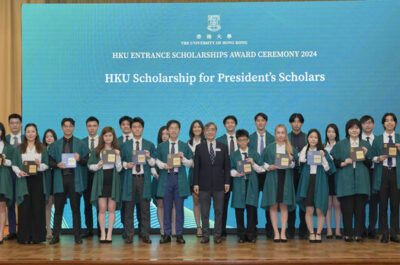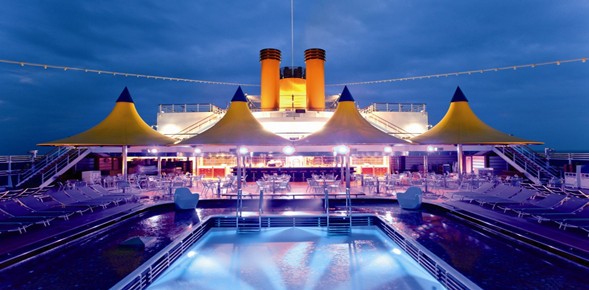More and more Chinese companies choose Hong Kong cruise as venues for meetings and vacations, especially teams with 100-200 people. Several reasons such as different kinds of restaurants embedded, various entertainments and performances as well as one-stop service contribute to the favor of cruise travel.
HONG KONG – Wu Gaoxian, COO of Cruises Genting (Hong Kong) Ltd., points out that Chinese enterprises often take meetings in the morning for 2-3 hours, followed by lunch in one of the restaurants during which team building activities will be taken. After these, staff will check in cabins and start to enjoy their one-day cruise journey in Hong Kong.
A senior manager from a travel agency in Shenzhen explains that more and more companies now are willing to combine group travel with annual meetings, exhibitions, conferences or other events. However, traditional travel conference model doesn’t seem to be cost-effective since organizers need to take everything into account with a high expense at the same time. Comparatively, cruises always offer one-stop services including venues for meetings and conferences, accommodations, food and banquets, high-tech equipments, venues settings, souvenirs, entertainments and performances, team buildings, gyms and even swimming pools, which save not only money but also time and efforts for organizers.
According to a report provided by PATA in 2008, cruise travel would go through three stages in China: 2006-2010, international cruise chains start to enter Chinese market which will stimulate the construction of cruise ports; 2011-2015, outbound cruise travel begins to boom in China with more and more individual tourists choosing to go by ships, especially when travelling to Asia-Pacific destinations; 2016 onwards, cruise industry in China will become mature with its service and infrastructure standard reaching an international level and domestic companies will form the mainstream.
It now comes to the middle of the second stage with statistics showing that in the year 2006, ports from all over the country received totally 115 cruise ships and by 2012, the number raised to 285, increasing 148%. While the number of passengers taking cruise ships for outbound travel augmented rapidly from 160,000 in 2006 to 660,000 within six years. During the first half of this year, a total amount of 236 cruise ships were received by ports throughout the country, showing a 117% growth year-by-year. As highlighted by Qian Changyong, former Secretary of Transportation, “It is estimated that by the year 2020, cruise market will contribute approx. 51 billion RMB to our economy to become the new growth point and it is agreed widely that China is now a market with the highest potential for cruise travel.”
However, domestic companies are still struggling to get a piece of the pie. Operating cruise business requires not only large amount of funds, but also experienced professionals, a comprehensive logistic and supply system, which have not yet been obtained by any Chinese runner. “What’s more,” added by Qian Changyong, “the country does not have the ability to build cruise ships at the moment due to technique barriers.”
Chinese tourists have started to recognize and accept cruise travel in recent years and the market proposes a high demand in the near future. A survey conducted recently reveals several facts: 1. Post-80s generation is leading the demand of cruise travel experience; 2. 44% of interviewees tend to take a cruise trip between July and September; 3. 48% of customers prefer 6-7 days trips; 4. South Korea is the most popular destination for cruise travel; 5. Women are more interested in cruise travel the men.




![[PR] PR_Ascott and Vimut Hospital_2024](https://www.traveldailynews.asia/wp-content/uploads/2024/04/PR-PR_Ascott-and-Vimut-Hospital_2024-400x265.jpg)




























































